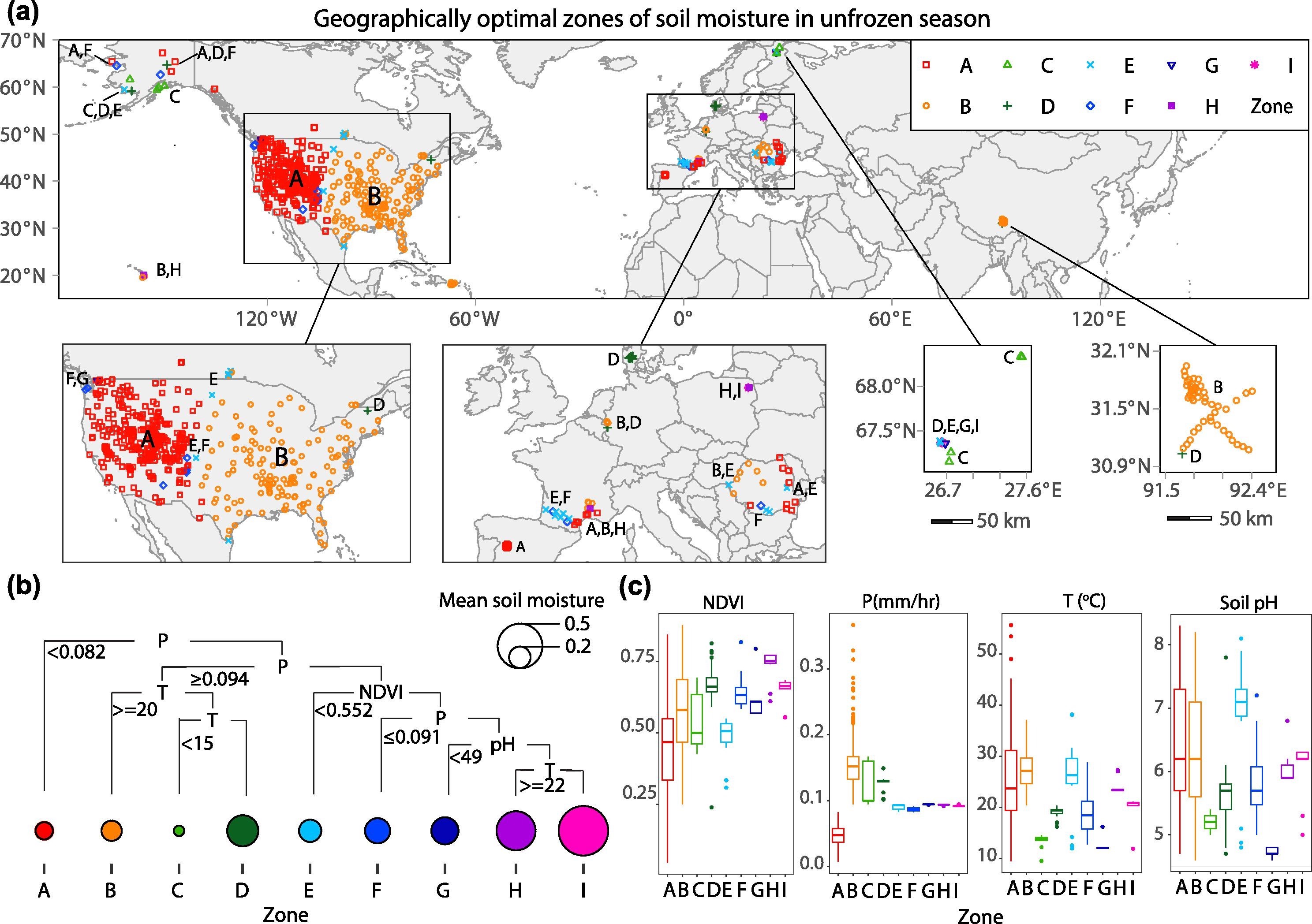Full Title: Identifying determinants of spatio-temporal disparities in soil moisture of the Northern Hemisphere using a geographically optimal zones-based heterogeneity model

Geographically optimal zones of soil moisture in the unfrozen season identified using the GOZH model (a), the process of identifying optimal zones (b), and statistical summaries of explanatory variables within zones for explaining characteristics of zones (c).
Abstract
Soil moisture is a fundamental ecological component for climate and hydrological studies. However, the distribution patterns of soil moisture are spatially heterogenous and influenced by multiple environmental factors. The knowledge is still limited in assessing the large-scale spatial heterogeneity of soil moisture in in situ data modelling, in situ network design, spatial down-scaling, and remote sensing-based soil moisture retrieval. Heterogeneity models are effective in characterizing spatial disparities, but they are not capable of examining the maximum regional disparities. To address this bottleneck, the authors of this study developed a geographically optimal zones-based heterogeneity (GOZH) model. By progressively optimizing geographical zones of soil moisture and quantifying the heterogeneity among zones, GOZH may help identify individual and interactive determinants of soil moisture across a large study area. It was applied to identify spatial determinants of in situ soil moisture data collected at 653 monitoring stations in the Northern Hemisphere in unfrozen and frozen seasons from April 2015 to December 2017, with only thawed data considered in both seasons. Correspondingly, a series of variables were derived from Google Earth Engine (GEE) remote sensing data. The results demonstrated the significant regional disparities of soil moisture, and the combinations of determinants are critically different among geographical zones and between unfrozen and frozen seasons. At a global scale, the combinations of determinants can explain about 48% of the spatial pattern of soil moisture. Spatial heterogeneity of soil moisture in frozen seasons is much more complex than that in unfrozen seasons regarding geographical zones and explanatory variables. The variability of soil moisture during unfrozen seasons can be more explainable than that during frozen seasons, which was a convincing evidence for previous studies that soil moisture predictions were mostly performed during unfrozen seasons. Primary variables that determine spatial patterns of soil moisture are changed from climate variables during the unfrozen season to geographical variables during the frozen season. Results show that GOZH model can effectively explore spatial determinants of soil moisture through avoiding the underestimation of individual variables, overestimation of multiple variables, and finely divide zones. The research findings from this study provide an in-depth understanding of the spatial heterogeneity of soil moisture and can be implemented in more effective in situ sampling network design, spatial down-scaling of soil moisture, and accurate inversion of surface parameters from the satellite data of soil moisture.
Keywords
Spatial heterogeneity; Soil moisture; Spatial determinants; Geographically optimal zones-based heterogeneity model; Google Earth Engine (GEE); Spatial statistics
Full Text Download
Q.E.D.









